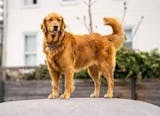Infrared Heating vs Traditional Heating
Infrared heating and traditional heating systems, such as convection heaters and central gas boilers, deliver warmth in fundamentally different ways. Infrared heaters use radiant energy to warm people and surfaces directly, while traditional systems heat the air first, relying on convection and circulation.
This comparison explains how each method works, what comfort differences you can expect, and how they perform in homes, offices, and commercial spaces. For detailed running cost comparisons, see our guide on how much infrared heating costs to run in the UK.
What is Infrared Heating?
Infrared heating is a type of radiant heating that uses electromagnetic radiation to heat objects and surfaces directly, rather than heating the air around them. This type of heating is similar to the warmth you feel from the sun, which heats your skin and clothes without warming the surrounding air.
There are three main types of infrared heat:
- Near Infrared – fastest warm-up
- Mid Infrared – balanced performance
- Far Infrared – deep, steady heat
What is Traditional Heating?
Traditional heating typically refers to systems that heat the air in a room. These include:
- Forced air systems – blow heated air through ducts
- Hot water radiators – circulate heated water
- Electric convection heaters – heat air by resistance
Key Differences Between Infrared and Traditional Heating
Energy Efficiency
Infrared heating transfers heat directly to people and surfaces, rather than relying on warmed air circulating through the room. This difference in heat delivery can reduce energy lost to air movement and temperature stratification.
Comfort
Infrared heating often provides more even and consistent warmth because it focuses on radiant heat. Traditional systems can create temperature variations across a room.
Health Benefits
Because infrared systems do not circulate air, they can help reduce the spread of dust, allergens, and airborne particles often stirred up by forced-air systems.
Installation & Maintenance
Infrared systems typically require less complex installation, as they do not need ductwork or water pipes. Fewer moving parts can also mean lower maintenance over time.
Comparing Infrared and Other Common Systems
Infrared Panels vs Gas & Electric Heating
Infrared heating panels convert almost all of the electricity they use into radiant heat at the point of use. By comparison, gas and traditional systems can lose energy through combustion, distribution outlets, and air movement before heat reaches occupants.
In terms of lifespan, infrared heating panels often last 20–25 years, compared to around 15–20 years for many gas and electric systems.
Installation cost for infrared panels is typically between £100–£500 per panel, whereas basic gas systems usually cost £3,000–£5,000 and electric convection systems around £2,000–£3,000.
Infrared vs Radiant Floor Heating
Radiant floor heating warms the floor surface, which then radiates heat upward. Infrared heaters emit heat from above, offering flexible mounting options such as wall or ceiling installation.
While radiant floor systems provide uniform warmth from the ground up, they often involve higher installation costs and complexity, especially with wet systems. Maintenance on those systems can also be more expensive over time.
Conclusion
Infrared heating and traditional heating systems differ fundamentally in how heat is produced and experienced within a space. Infrared systems deliver radiant warmth directly to people and surfaces, while traditional systems rely on heating and circulating air.
Understanding these differences can help homeowners and businesses choose a heating approach that suits their building type, usage patterns, and comfort requirements. Cost, installation, and control considerations can then be assessed separately using detailed running cost and system comparison guides.



